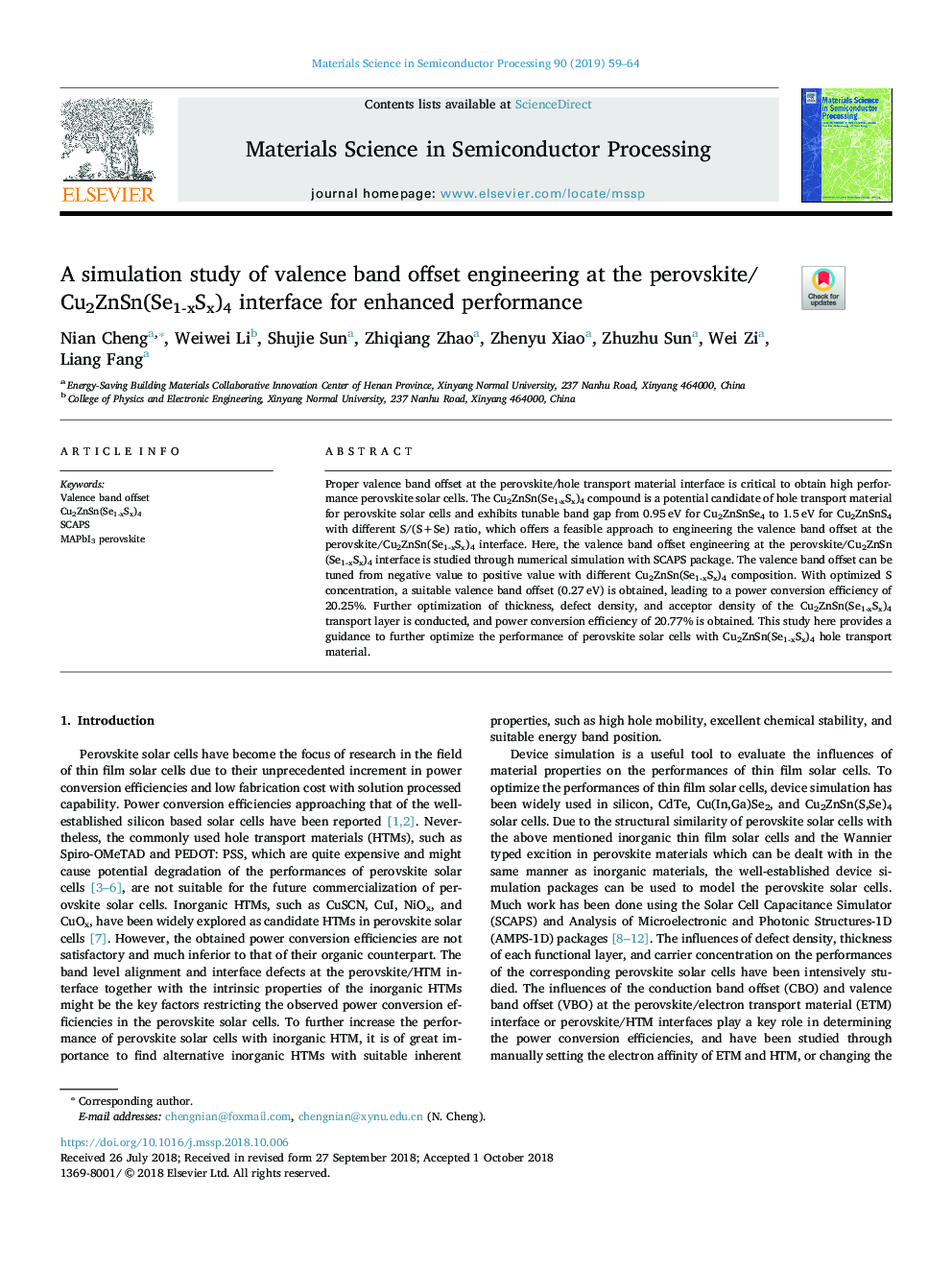| Article ID | Journal | Published Year | Pages | File Type |
|---|---|---|---|---|
| 11262689 | Materials Science in Semiconductor Processing | 2019 | 6 Pages |
Abstract
Proper valence band offset at the perovskite/hole transport material interface is critical to obtain high performance perovskite solar cells. The Cu2ZnSn(Se1-xSx)4 compound is a potential candidate of hole transport material for perovskite solar cells and exhibits tunable band gap from 0.95â¯eV for Cu2ZnSnSe4 to 1.5â¯eV for Cu2ZnSnS4 with different S/(S+Se) ratio, which offers a feasible approach to engineering the valence band offset at the perovskite/Cu2ZnSn(Se1-xSx)4 interface. Here, the valence band offset engineering at the perovskite/Cu2ZnSn(Se1-xSx)4 interface is studied through numerical simulation with SCAPS package. The valence band offset can be tuned from negative value to positive value with different Cu2ZnSn(Se1-xSx)4 composition. With optimized S concentration, a suitable valence band offset (0.27â¯eV) is obtained, leading to a power conversion efficiency of 20.25%. Further optimization of thickness, defect density, and acceptor density of the Cu2ZnSn(Se1-xSx)4 transport layer is conducted, and power conversion efficiency of 20.77% is obtained. This study here provides a guidance to further optimize the performance of perovskite solar cells with Cu2ZnSn(Se1-xSx)4 hole transport material.
Keywords
Related Topics
Physical Sciences and Engineering
Engineering
Electrical and Electronic Engineering
Authors
Nian Cheng, Weiwei Li, Shujie Sun, Zhiqiang Zhao, Zhenyu Xiao, Zhuzhu Sun, Wei Zi, Liang Fang,
